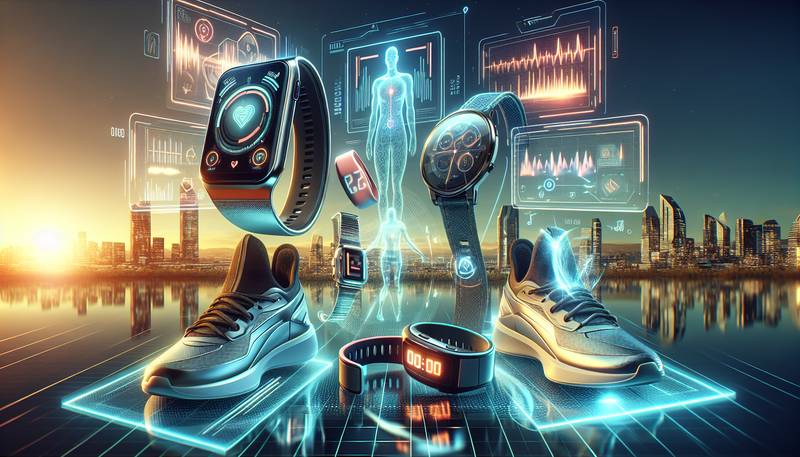Wearable Fitness Tech: Beyond the Step Counter

Let's face it, when it comes to wearable fitness tech, the first thing that comes to mind is the trusty step counter. Whether it's a Fitbit, an Apple Watch, or a Garmin, we've all become obsessed with hitting that magical 10,000 steps a day goal. But, in the fast-paced world of technology, fitness wearables have evolved way beyond counting steps, and there's a whole new world of gadgets out there that can help you optimize your workouts, monitor your health, and even improve your sleep.
The Evolution of Wearable Fitness Tech
Wearable fitness tech has come a long way since the humble pedometer. Today, these devices are packed with sensors and features that can track everything from your heart rate, to your sleep patterns, to your stress levels. And, with the rise of smartwatches, fitness trackers have become more than just a tool for monitoring your workouts, they've become a lifestyle accessory.
Heart Rate Monitors
One of the most significant developments in wearable fitness tech is the inclusion of heart rate monitors. These devices use optical sensors to measure your heart rate throughout the day and during your workouts. This data can help you gauge the intensity of your exercises, and can also provide insights into your overall cardiovascular health.
GPS Tracking
Gone are the days of guessing how far you've run, or relying on your phone's GPS to track your workout. Many fitness wearables now come with built-in GPS, which can accurately track your distance, pace, and even elevation. This is especially useful for runners, cyclists, and hikers who want to keep tabs on their outdoor workouts.
Sleep Tracking
We all know that getting a good night's sleep is crucial for our overall health, and wearable fitness tech can help you monitor your sleep patterns. These devices track your movements and heart rate during the night, and can provide detailed reports on the quality of your sleep, including how much time you spend in each sleep stage.
Stress Monitoring
Many wearables now come with stress monitoring features, which can help you keep tabs on your stress levels throughout the day. These devices use heart rate variability (HRV) data to measure your stress, and can even provide guided breathing exercises to help you relax.
The Future of Wearable Fitness Tech
The wearable fitness tech industry is constantly evolving, and we're only beginning to scratch the surface of what these devices can do. From smart clothing that can track your muscle activity, to augmented reality glasses that can enhance your workouts, the possibilities are endless.
Smart Clothing
Smart clothing is the latest trend in wearable fitness tech, and it's set to revolutionize the way we work out. These garments have sensors embedded into the fabric, which can track your muscle activity, heart rate, and even your breathing. This data can be used to optimize your workouts, prevent injuries, and even improve your posture.
Augmented Reality
Augmented reality is another exciting development in wearable fitness tech. These devices use glasses or goggles to overlay digital information onto the real world, which can enhance your workouts and make them more interactive. Imagine running through a virtual obstacle course, or cycling through a virtual landscape, all from the comfort of your own home.
Conclusion
Wearable fitness tech has come a long way since the humble step counter, and the future looks even more exciting. From smart clothing to augmented reality, these devices are set to revolutionize the way we work out and monitor our health. So, whether you're a fitness enthusiast or just looking to improve your overall well-being, there's a wearable fitness gadget out there for you. And, who knows, maybe one day we'll look back on the step counter with the same fondness we have for the pedometer.


